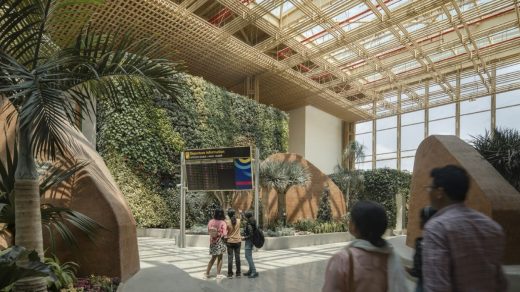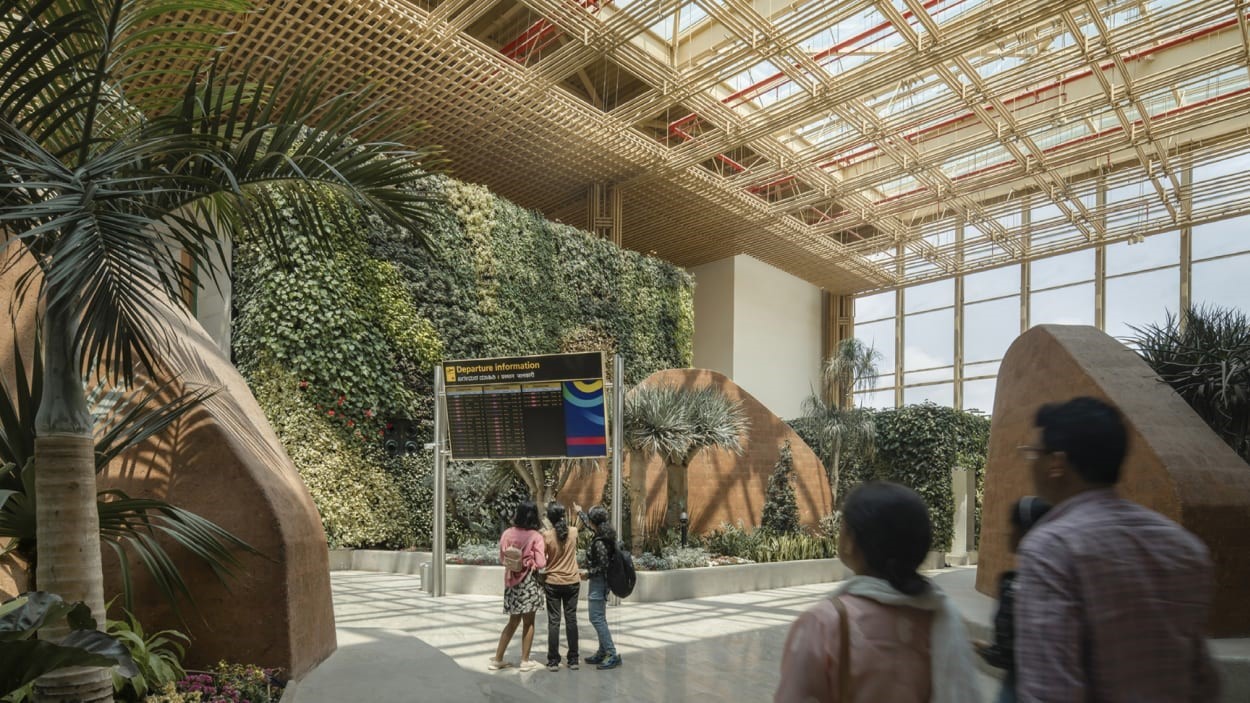This amazing new Indian airport will make you hate U.S airports even more
Two weeks ago, I flew to Montreal from LaGuardia Airport. I was traveling with my mom, who had come to visit from Bulgaria, and we went four hours ahead of time so we could hang out by the fountain and enjoy everything the new terminal has to offer.
This is a lie, of course.
Most airports are boring, broken, transitional spaces with overpriced coffee, soggy paninis, long corridors, ugly drop ceilings, and absolutely nowhere to lie down when your flight inevitably gets delayed. The new LaGuardia is no longer a dumpster fire of an airport (though the overpriced coffee remains), but there’s really only so much you can do there.
Airports are for flying. Who would choose to spend any more time there than they need to?
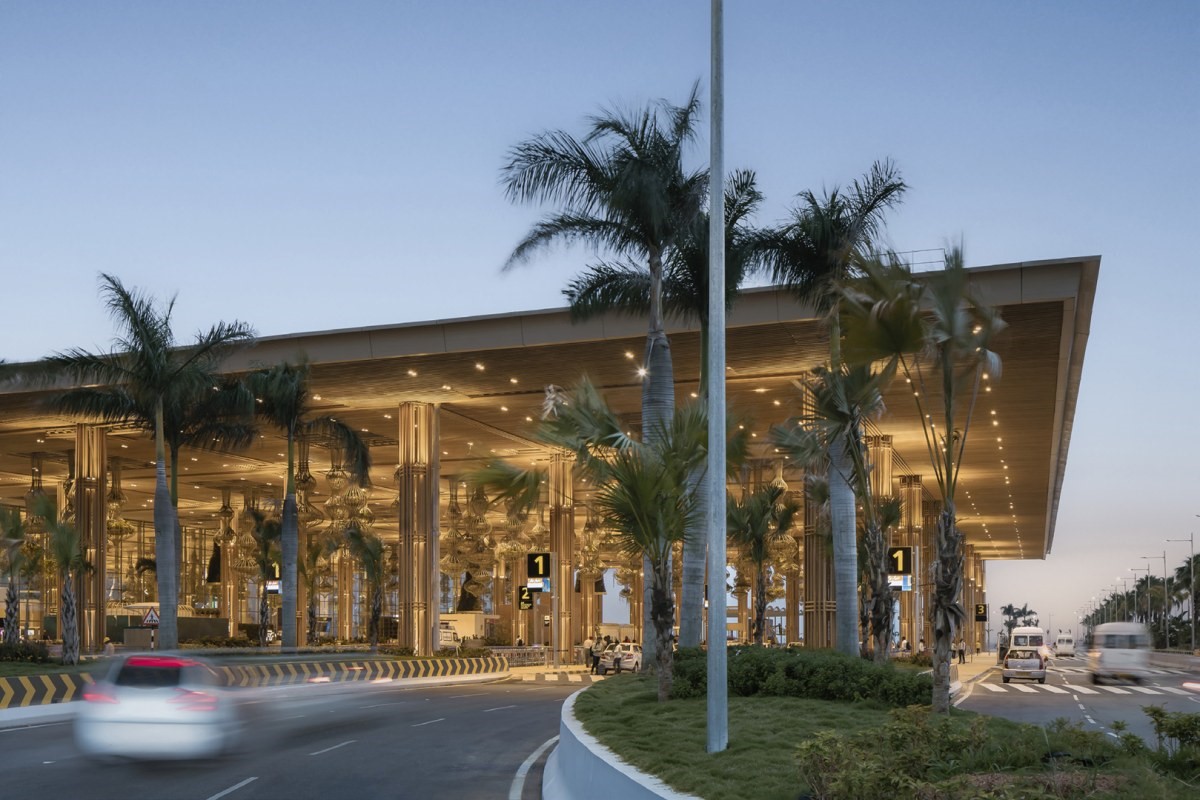
One airport in Bengaluru, India, might have found an answer. Opening September 1, the new terminal designed by SOM at Kempegowda International Airport is fronted by a sprawling, 25-acre public outdoor space filled with the kind of dining and shopping bonanza you’d normally see only once you got past security. The terminal boasts lush gardens, rainwater-collecting ponds, a conference center, and the ability to program outdoor events and concerts.
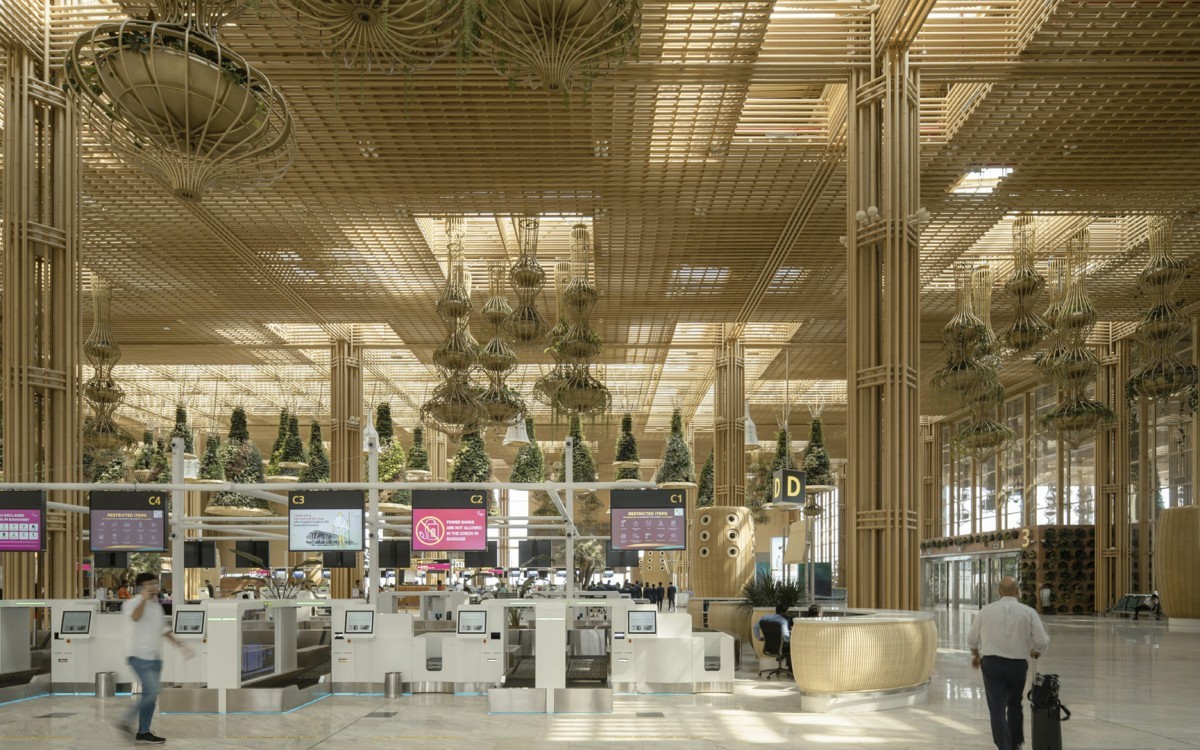
That anyone would travel to the airport to see a band or grab a bite might seem implausible in the U.S. for many reasons, including the total lack of public transit infrastructure required to make it work. But it might just be the right move in Bengaluru.
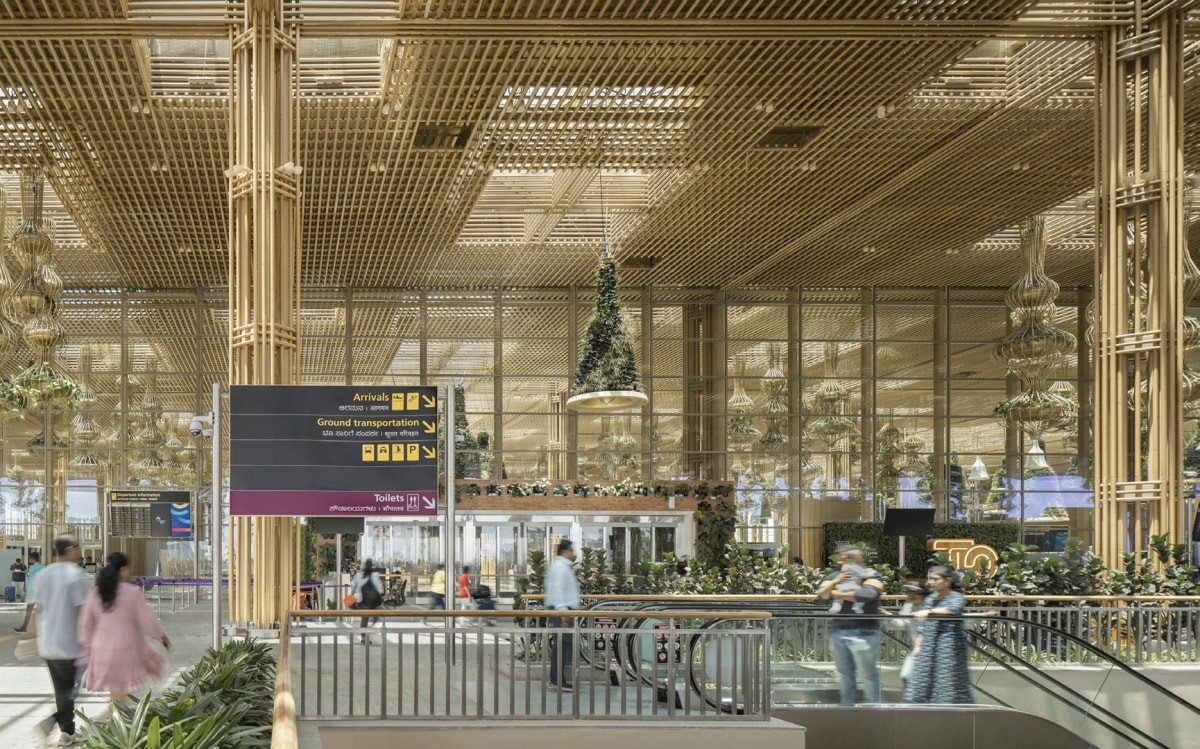
Sending off or welcoming family in India is oftentimes “a family affair, with sometimes dozens of family members traveling to the airport,” says Peter Lefkovits, a senior designer at Skidmore, Owings & Merrill (SOM). The problem is that all airports in India are access-controlled, meaning you can enter the building only if you have a boarding pass. So if you’re sending your daughter off to college, you have to say goodbye outside the terminal, making an already painful moment all the more so.
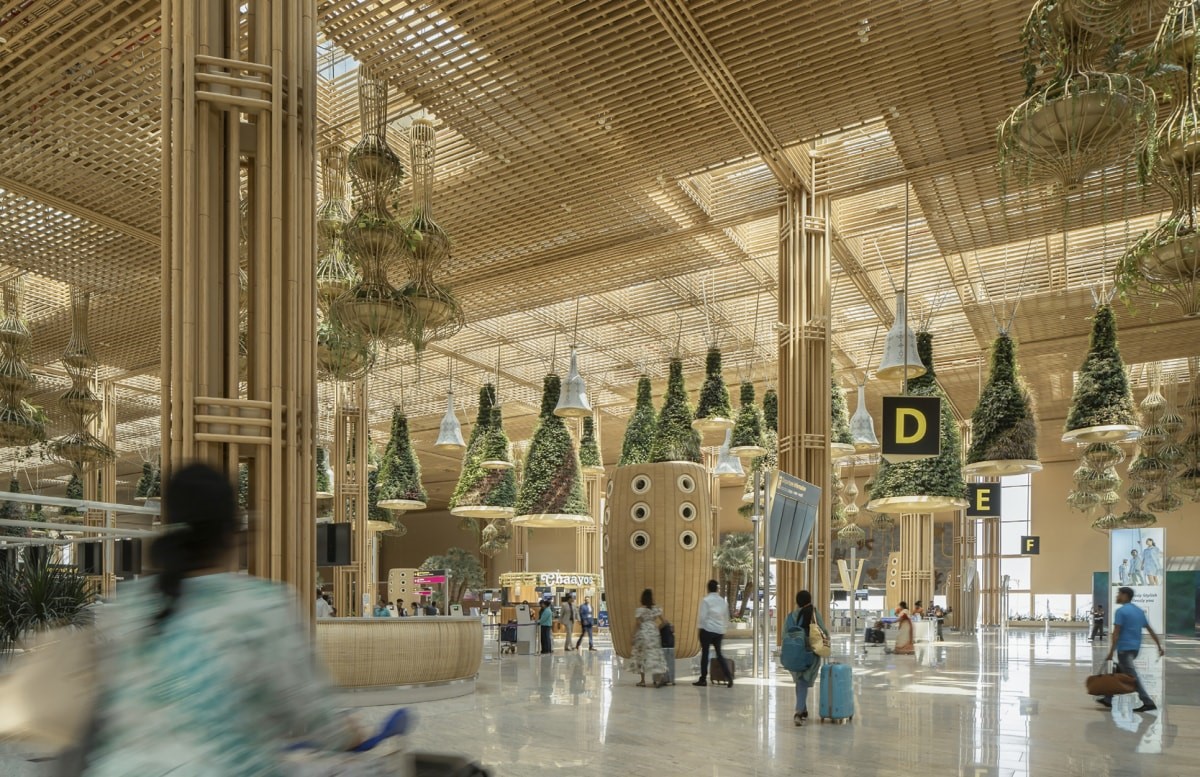
With the new terminal, which has been in the works since 2013, families can drive to the airport (or take the metro when it eventually opens in 2026) and spend time outside until the moment comes for those flying to depart. Passengers will then enter the airport—an absolute jewel box dressed in bamboo lattices and hanging plants—meander through a lush network of gardens, and reach their gate via open-air bridges. “There are stepped gardens where you can have a picnic while you’re waiting for the plane,” Lefkovits says.

This isn’t the first time the airport has experimented with entertainment, though. About seven years ago, Kempegowda International began organizing concerts on a plaza outside the old terminal. The pilot program was a success, and to this day people still go to the airport to watch sports screenings or see a live performance.
While the airport is located well outside the city center, Lefkovits notes that there are people living in the vicinity, and tech parks have cropped up nearby with employees who are eager for culture and entertainment but aren’t interested in getting stuck in traffic to go into the city. “The ability to provide a place that was car-free, safe, open-air . . . they saw that there was a real need for that,” he says. “On weekends, this became a destination.”
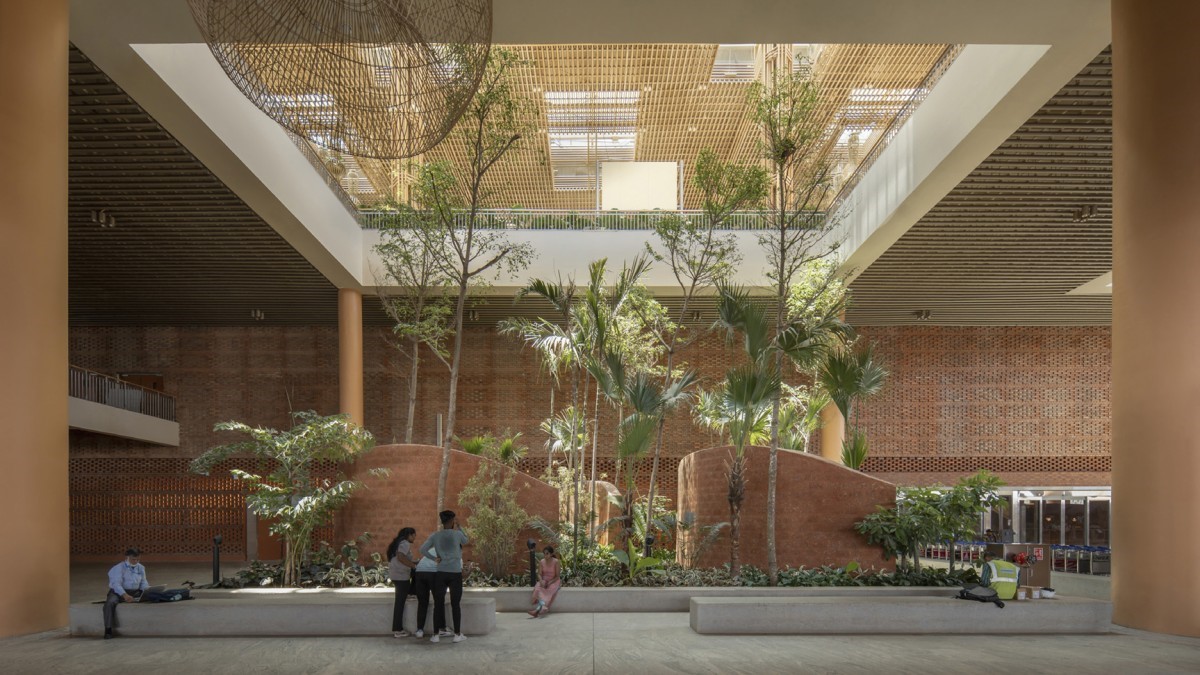
Could the same treatment work anywhere else in the world? Some airports have already understood the importance of diverse offerings. At Schiphol Airport in Amsterdam, you can pick a book from the Airport Library, see 17th-century paintings at an outpost of the world-famous Rijksmuseum in Amsterdam, and even hit the casino.
And at Changi Airport in Singapore, you can visit a butterfly garden, climb a boulder, and gape at the world’s largest indoor waterfall, courtesy of Safdie Architects. “People are okay with the idea of going to the airport not to fly because there are other facilities there,” says Laura Ettelman, managing partner at SOM. “It’s really about how you develop it and program it.”
(15)

